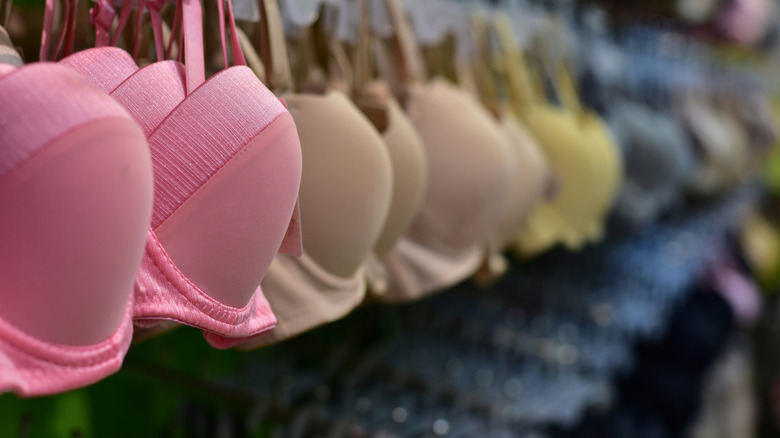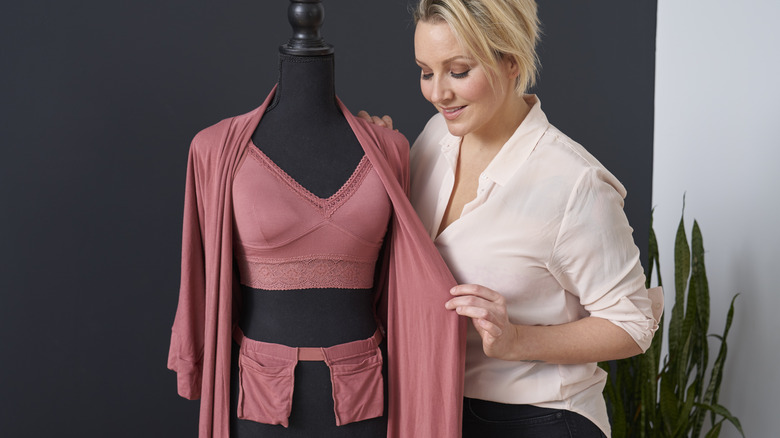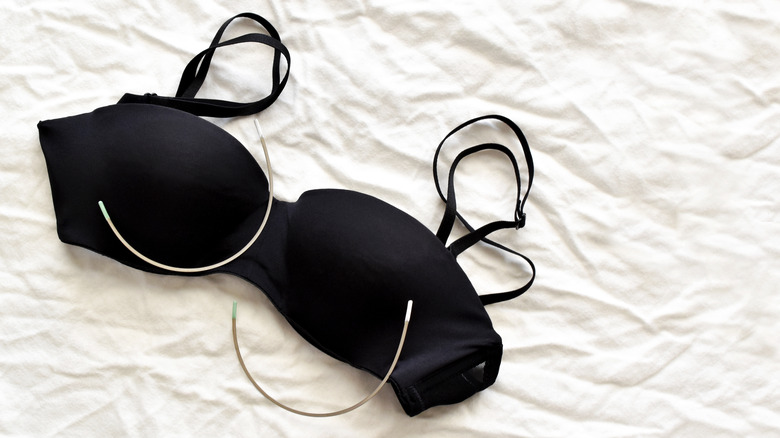What AnaOno's Founder Wants You To Know About How Breast Cancer Treatment Impacts Wearing A Bra
About one in eight women will be diagnosed with breast cancer, making it the most common cancer for women in the US, per CDC. And Breast Cancer Awareness Month — held in October — is a worldwide effort to help educate people on breast cancer and its impact. In addition, monthly self-exams to feel for any changes in your breasts is one of the tools women can use to help detect breast cancer early.
Early detection of breast cancer can mean "treatment options that are much less aggressive, while still maintaining incredibly positive treatment outcomes," according to Dr. Ana Benveniste, breast radiologist at Houston Methodist. Breast cancer screening guidelines vary depending on different recommending bodies, but the broad strokes recommendation is to talk to your doctor by the age of 40 about your family history and potential for annual mammograms, and by age 50 to 55, start getting regularly scheduled mammograms, per CDC. Here's what to expect during a breast cancer screening.
Once breast cancer has been diagnosed, there's a variety of treatment options, and many of them can leave women with changes in their breasts that can make wearing a traditional bra hard or even impossible. AnaOno, founded by Dana Donofree, makes bras and lingerie specifically designed for a range of breast types, particularly in regard to breast cancer. Donofree spoke exclusively with The List about what impacts breast cancer has on wearing a bra.
Breast cancer treatment leaves the breast area sensitive
Dana Donofree, CEO and founder of AnaOno, was diagnosed with breast cancer at the age of 27, and she lost both her breasts to cancer. Finding a bra that could fit and make her feel good about herself proved to be an overwhelming challenge, so she designed her own. Donofree exclusively told The List some of the things that have to be considered when choosing a bra after breast cancer treatment. It starts with realizing the variety of ways that treatments change your body. "Breast cancer treatment can lead to many different surgery outcomes," Donofree said, "you can remove your breasts entirely (mastectomy) and some choose to replace the breast mound by undergoing additional surgeries like breast reconstruction. Another surgery choice is a lumpectomy, which only removes the tumor and surrounding area, which often leads to additional treatments like radiation."
With those different treatment options, Donofree explained, there will be "different results and alternative needs for bras and undergarments." Each has specific considerations. If you have had breast surgery, the "incision points are very sensitive," Dana Donofree told The List. "And if undergoing radiation, the skin can also become very sensitive." Wearing a soft cotton bra with adjustable straps and a wide underband is ideal, and it can take up to a year for the skin to recover, per Breast Cancer Now. Other recommendations are to wear a front clasp bra, via University Health Network.
A comfortable bra means patients can concentrate on healing
Dana Donofree described some of the bra options for patients who've had a mastectomy: "they may want a bra that fits flat against the chest but protects and/or masks scarring, while some may wish to use a breast form or a breast insert, such as a F(oo)B [AnaOno's breast foam inserts for their bras] to slide into a pocket on the inside of the bra to secure it in place." The inserts can allow for clothing to fit in a similar way to pre-surgery or to even out the appearance of breasts in the case of a single mastectomy or lumpectomy.
If your health insurance policy covers a mastectomy, by federal regulation, it must also cover breast reconstructions, and over 40% of women who had a mastectomy followed it with breast reconstruction as of 2016, per Effective Health Care Program. Reconstruction has its own considerations for bra choice. "Underwires are often difficult to fit after breast reconstruction, and cause unnecessary pain," said Donofree, "so to avoid underwires but find the coverage and support desired can also be challenging."
The main goal overall for choosing a bra after breast cancer treatment for Donofree is for it "to be as comfortable as possible so the patient can focus on healing."


